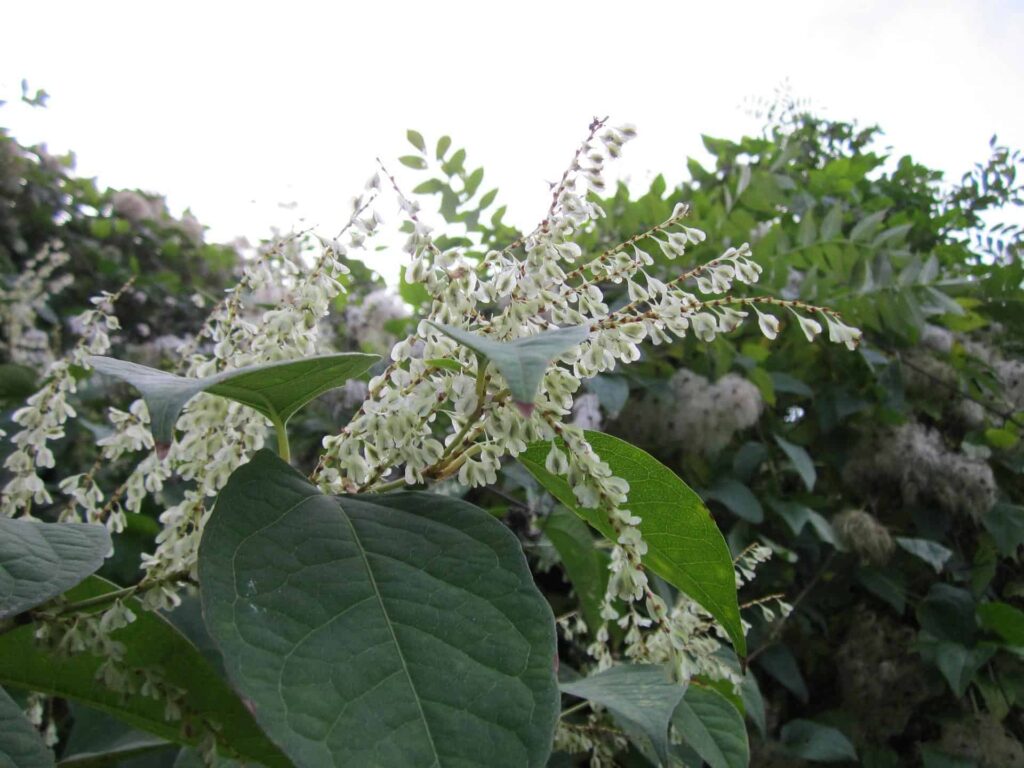Japanese knotweed is now better recognized, and awareness of it is on the rise. According to Environet statistics, around a third of us may walk away from our ideal home if we found out it was infested by invasive weed.
But it doesn’t have to be the end of the road. Knotweed may be treated with assurances that will satisfy most mortgage lenders, allowing sales to proceed without trouble.
What is Japanese knotweed?
Knotweed is native to Japan’s volcanic slopes, where it was introduced in the UK in 1850 in a shipment of specimens sent to Kew Gardens. Because the Victorians liked it more as an ornamental plant, knotweed has become established in the UK.
Japanese knotweed is the UK’s most invasive plant species, according to the Environment Agency, because it spreads through its powerful subterranean root system, pushing up through asphalt, cracks in concrete, drains, and even cavity walls of our homes in search of light and water.

What does Japanese knotweed look like?
In early spring, tiny red or purple asparagus-like spears emerge from the earth and bright green heart or shield-shaped leaves unfurl in a zigzag stem pattern as they develop.
The stems harden and take on a bamboo-like appearance as the plant reaches maximum height of three meters in the summer.
Knotweed flowers in late summer, when clusters of lovely creamy-white blooms bloom.
In the fall, the leaves become golden yellow and fall to the ground as knotweed goes into its winter rest. The stems have now turned brittle and appear dead, but below the earth, the plant is very much alive and waiting to re-appear next spring.
What should I do if knotweed grows on my property?
It is not a notifiable weed, and if you decide to leave knotweed on your property, you are not breaking the law.
However, you are required by law to keep knotweed from spreading beyond your grounds, which may result in ‘Private Nuisance’ action or even an ASBO if you do not comply.
Is it possible to buy or sell a home with knotweed?
When it comes to Japanese knotweed, honesty is the best policy.
Sellers must respond honestly to a specific query regarding Japanese knotweed on the TA6 Property Information form, which is completed as part of the conveyancing procedure – and failing to do so may result in a very unpleasant and costly misrepresentation claim later on.
If you’re not sure if knotweed is there, get a detection dog survey to find out.
Even if knotweed is hidden underground, Environet’s sniffer dogs will search the garden and indicate by freezing if knotweed is present. If knotweed infestation ruins a home, the buyer should demand that a treatment plan is implemented right away and a guarantee for the work be provided in order for the transaction to go through.
Will knotweed have an impact on the value of my house?
Yes, knotweed can reduce the buyer’s price by 10%, but don’t worry. If the problem is professionally treated with an insurance-backed warranty, the property’s value usually returns to near to the non-affected value.
How to treat Japanese knotweed?
The most popular knotweed treatment is herbicide application for two to three years. Increasingly, homeowners are choosing to have the knotweed physically dug out of the ground, with all viable rhizome roots sifted and removed from the infected soil.
The procedure takes only a few days to complete, and it can be done at any time of year. After that, an insurance-backed guarantee may be obtained, ensuring that obtaining a mortgage is trouble-free and the property may be sold without difficulties.
Japanese knotweed is a problem, to be sure. It can cause significant damage to structures and reduce their value. There’s no reason why it should be a deal breaker if it’s addressed with the appropriate treatments and warranties in place.
Our estate agents in Hull and Beverley are ready to answer all your questions and concerns regarding Japanese Knotweed.










